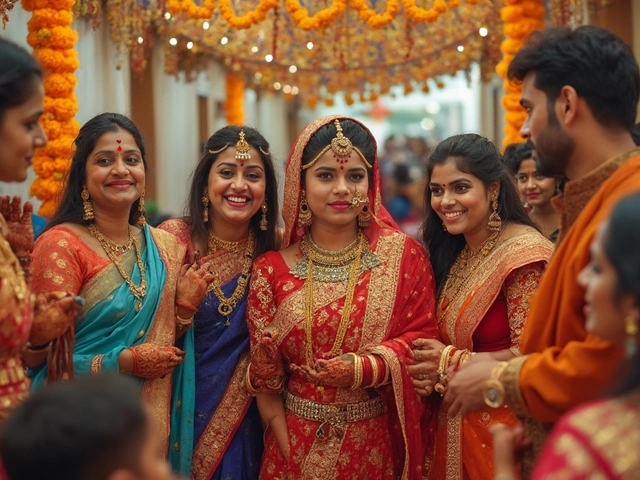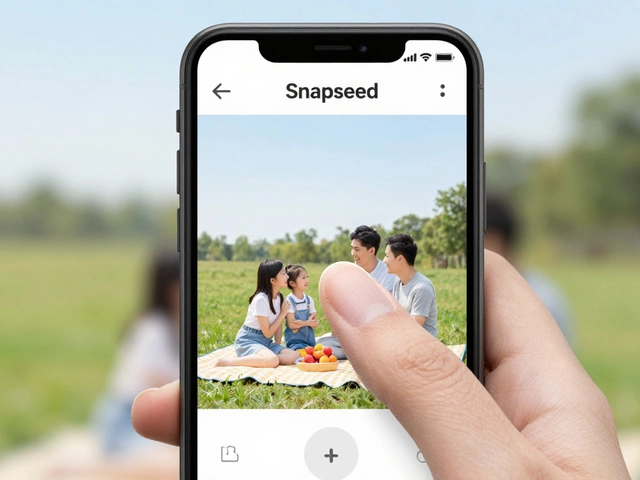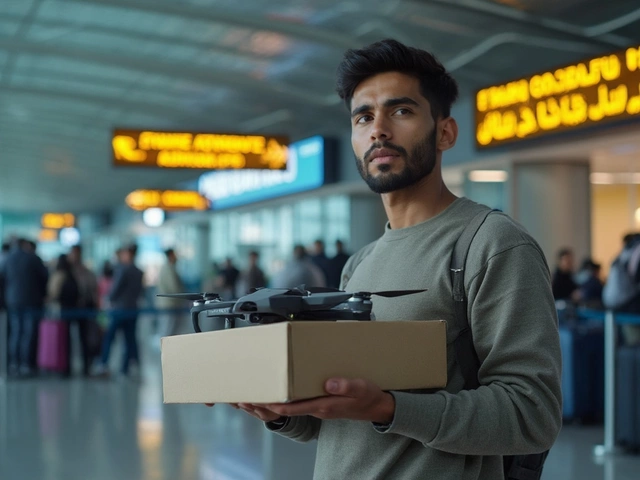If you've heard people talk about 'DSLRs' when discussing cameras, you're not alone in wondering what all the fuss is about. The term DSLR gets thrown around in tech stores, YouTube reviews, and even during casual family weddings when someone's waving around a giant camera. But here's the thing—a DSLR isn't just any camera with a detachable lens. There's a unique way it works, and understanding it can make your camera shopping way less confusing.
Here's the real deal: DSLR stands for Digital Single Lens Reflex. The big word here is 'reflex.' These cameras use a mirror mechanism to let you see exactly what the lens sees. That means when you look through the viewfinder, you're literally getting the live action, not just a digital preview. It feels direct, sharp, and super satisfying compared to just using your phone screen.
Before dropping money on a fancy camera, it's handy to know what sets DSLRs apart. Are they bulky? Sure. Do they look professional? Absolutely. But there's more—things like battery life, lens choices, quick focus, and even that nice 'click' sound make them stand out. Once you get a feel for what a DSLR actually means, you'll have a lot more confidence picking one that fits your needs.
- What Does DSLR Stand For?
- How a DSLR Works
- Why People Choose DSLRs in India
- Quick Tips for Buying Your First DSLR
What Does DSLR Stand For?
DSLR stands for Digital Single Lens Reflex. It might sound technical, but breaking it down makes it simple:
- Digital: The camera captures images electronically, not on film like those old-school cameras your uncle might have stored away.
- Single Lens: You use one lens for framing, focusing, and capturing. What you see in the viewfinder is what you get in your image. No tricks or surprises.
- Reflex: There is a special mirror inside the camera that reflects the image up to the viewfinder. When you press the shutter, the mirror flips up so the sensor can grab the photo.
The whole point of this design is you get a real, through-the-lens view, which is super helpful for framing your shot exactly how you want it. You're not relying on a digital guess—it's an actual light path straight from the lens to your eye.
The concept of the Single Lens Reflex camera goes way back—before digitals, SLRs (the film version) were the standard for both hobbyists and pros. The DSLR camera just brought this tech into the digital age, making it faster, more flexible, and better for editing and sharing.
| Feature | DSLR | Smartphone Camera |
|---|---|---|
| Viewfinder | Optical (real view) | Digital screen only |
| Sensor Size | Much bigger | Small |
| Lens Options | Interchangeable | Fixed or digital only |
| Manual Controls | Full (ISO, shutter, etc.) | Limited |
If you're aiming for those crisp, detailed shots—think portraits, sports, wildlife, or even night scenes—a DSLR gives you the control and quality that most phone cameras just can't touch. That's why they're still a favourite, even with smart tech everywhere.
How a DSLR Works
The cool thing about a DSLR is how mechanical it actually is. When you snap a photo, here's the path your image takes: light comes through the camera lens and hits a mirror sitting at a 45-degree angle inside the body. That mirror sends the light up to a second mirror, then through a small lens system called a pentaprism (or sometimes a pentamirror). This system flips and straightens the image, so when you look through the viewfinder, you see things the right way around—no upside-down surprises.
When you press the shutter button, the mirror instantly flips up, out of the way. Now, the light travels straight to the digital sensor at the back of the camera, capturing the image. It all happens in a split second and creates that satisfying “click” sound DSLR fans love. Want to know why so many pros and hobbyists still go for DSLRs, even with mirrorless and phone cameras everywhere? Simple—this reflex system means you get a real-time, lag-free view and super-fast focus, especially with moving subjects.
Here’s a breakdown of what a DSLR does every time you take a photo:
- Light hits the lens.
- Mirror reflects the light upward.
- Pentaprism flips the image for your viewfinder.
- You press the shutter—mirror flips up instantly.
- Light reaches the digital sensor and the photo’s captured.
Some newer DSLRs even let you use the LCD screen like on phones, which is called Live View. But the real magic is still in that optical viewfinder and fast, accurate focusing. For action shots or low-light places—like when my wife Meera’s running around with the kids at the park—a DSLR often nails it better than most other options.
Now, just to keep things clear, here’s a quick comparison of DSLR features versus mirrorless and typical smartphone cameras:
| Feature | DSLR | Mirrorless | Smartphone Camera |
|---|---|---|---|
| Viewfinder Type | Optical (reflex mirror) | Electronic (digital display) | No viewfinder / LCD only |
| Autofocus Speed | Very fast (phase detection) | Fast, improving each year | Fine for casual shots |
| Battery Life | Long (400–1000+ shots) | Shorter (Usually 300-500 shots) | Depends on phone, often less |
| Lens Choices | Huge variety, all budgets | Growing, but fewer options | Fixed or clip-on |
Understanding how a DSLR camera works can really help you decide if it fits what you want to shoot, whether that’s family trips, sports, or those big Indian weddings where you want every detail sharp and in focus.

Why People Choose DSLRs in India
If you’ve ever been to a crowded market or a wedding in Chennai or Delhi, you’ve probably spotted at least three people clicking photos with chunky black cameras. There’s a reason for this. DSLRs have a strong grip in India’s camera scene. Let’s break down why so many folks still prefer them, even when phones and mirrorless cameras are all over the place.
- DSLR camera options give you more control than regular smartphones and basic digital cameras. You can set things like shutter speed, ISO, and aperture, so your photos look the way you want them to.
- Lenses are a big deal. With DSLRs, you’ve got access to a whole world of lenses. Whether you need a super-wide lens for landscapes or something close for food pictures, there’s probably a lens out there that fits your taste and budget.
- DSLRs are rugged. Indian weddings, outdoor shoots in the sun, and busy events—these cameras can take some beating. Most entry-level DSLRs from Canon or Nikon can handle dust, bumps, and long power cuts better than most fancy gadgets.
- Batteries last much longer than on most mirrorless cameras. Some models shoot up to 1000 photos on a single charge. You don’t have to worry about carrying power banks everywhere.
Here’s a quick look at how DSLRs compare to other camera types in India:
| Camera Type | Average Battery Life (Shots) | Available Lenses | Popular Brands |
|---|---|---|---|
| DSLR | 800 - 1200 | 60+ | Canon, Nikon |
| Mirrorless | 300 - 700 | 30+ | Sony, Fujifilm |
| Smartphone | Varies (100-400 typical use) | Built-in only | Samsung, Apple |
Photography clubs in cities like Mumbai and Bangalore regularly recommend DSLRs for beginners since they are widely available, affordable, and have tons of tutorials in Hindi and English. Rental camera shops across India stock a huge range of DSLR models, so you don’t have to buy to try one out. That makes getting started in photography much less risky.
If you like physical controls instead of touchscreens, or if you want to try sports, wildlife, or wedding photography, a DSLR still makes sense. Even with new tech coming out every year, the hands-on feel and flexibility of a DSLR keep them popular here.
Quick Tips for Buying Your First DSLR
Walking into a camera shop can feel overwhelming, especially with all those rows of chunky cameras and sales talk. You want something that works, not just looks cool around your neck. So here’s what really matters when you pick your first DSLR in India:
- DSLR camera models usually come as body-only or with a kit lens. For beginners, a kit lens (usually 18-55mm) is great to start with—you can always upgrade later.
- Don’t chase megapixels alone. Anything above 16MP covers print and online sharing needs. What matters more is sensor size. Look for APS-C sensors, which most entry and mid-level DSLRs use—they pack in better image quality than smaller point-and-shoot sensors.
- Check autofocus speed and points, especially if you like action, sports, or pets. Entry models like Nikon D3500 come with 11 AF points, while Canon’s EOS 1500D offers 9. More focus points give you better chances at sharp photos, especially with moving subjects.
- Ease of handling really matters. You’ll want a grip that fits nicely in your hand and menus that aren’t confusing. Go to a store and hold the camera—it sounds old school, but it saves a lot of frustration later.
- Think about battery life. DSLRs generally offer way more than mirrorless or smartphone cameras. For example, the Nikon D5600 gives you around 970 shots per charge—a lifesaver during weddings and trips.
- Compatibility with affordable, high-quality lenses is a big win. Canon and Nikon have massive secondhand markets in India, so you’ll find everything from 50mm primes for portraits to telephoto zooms for wildlife without wrecking your wallet.
- Make sure the camera supports basic manual controls—even if you use Auto mode now, you’ll want more control as you get comfortable.
Here’s a quick look at some entry-level DSLRs and what they offer:
| Model | Approx. Price (INR) | MP | Autofocus Points | Battery Life (Shots) |
|---|---|---|---|---|
| Canon EOS 1500D | 37,000 | 24.1 | 9 | 500 |
| Nikon D3500 | 36,000 | 24.2 | 11 | 1550 |
| Sony Alpha A68 | 43,000 | 24.2 | 79 | 510 |
Don’t forget about deals—festivals like Diwali or Big Billion Day sales on Flipkart and Amazon usually offer big camera discounts. And if you see last year’s model for a better price, don’t stress; photo quality improvements aren’t always dramatic each year.
Buying your first DSLR shouldn’t make you nervous. Focus on what you really need and how you plan to use it. The right pick will help you enjoy photography, not just carry around extra weight in your bag.





